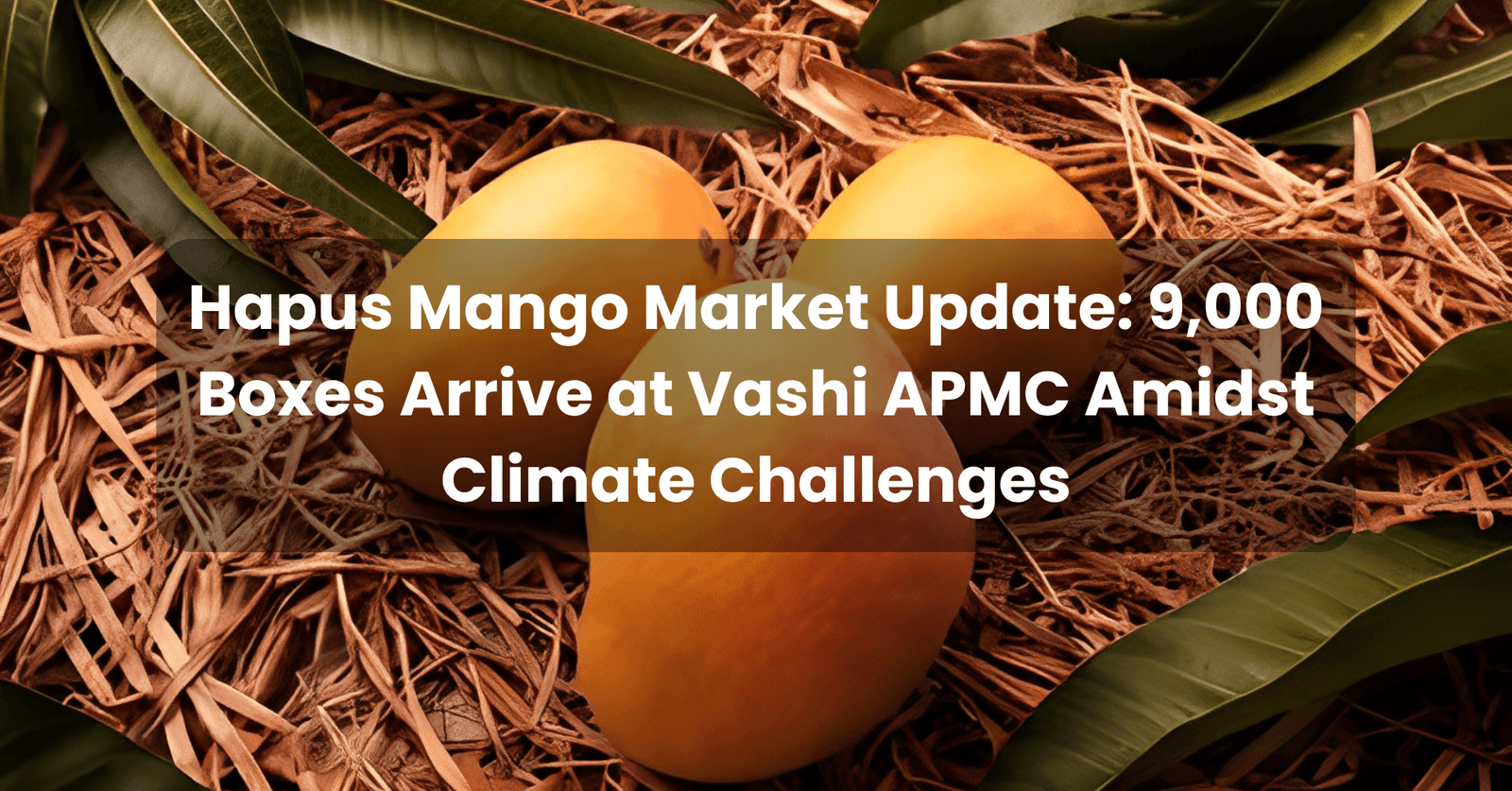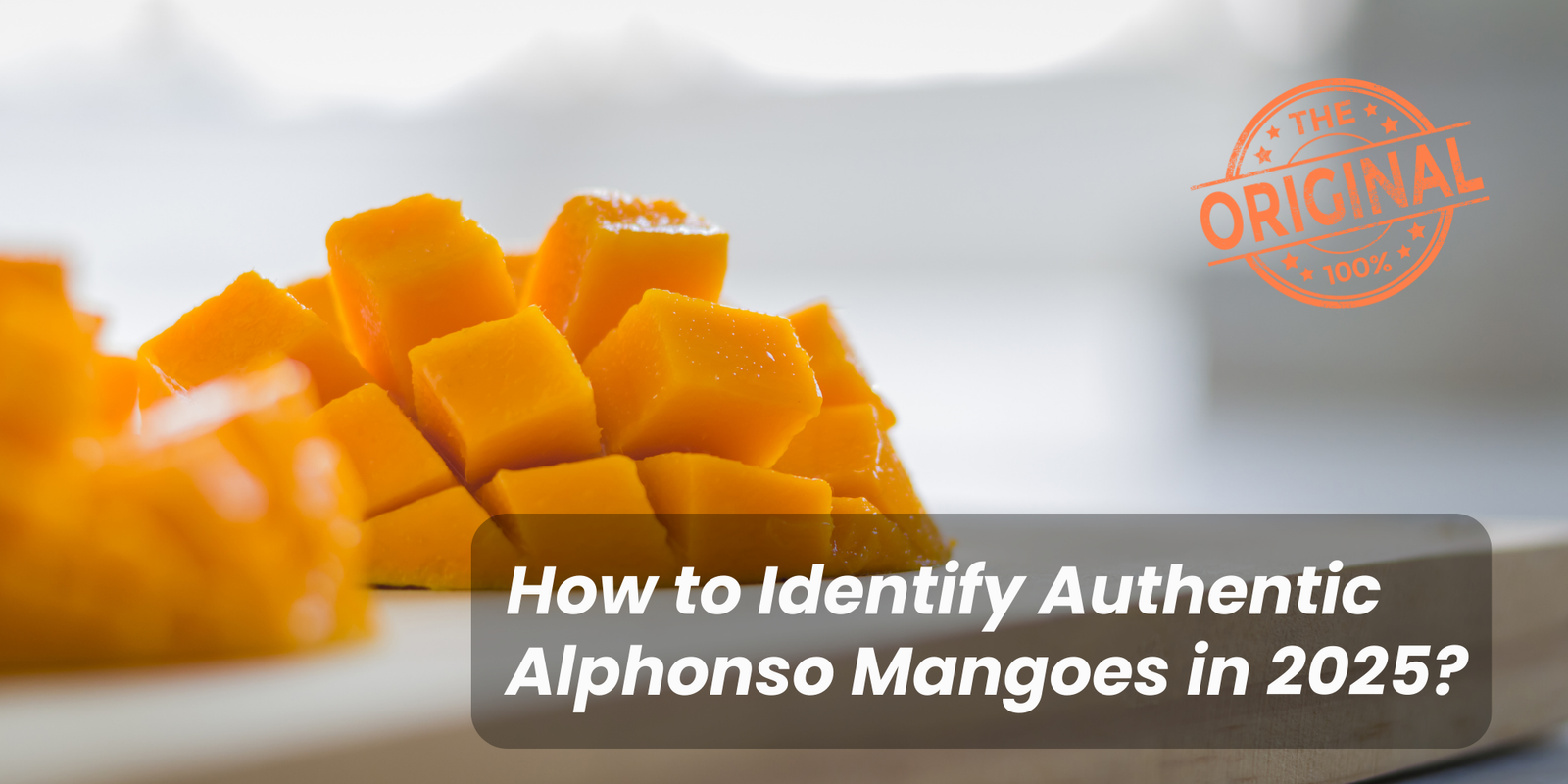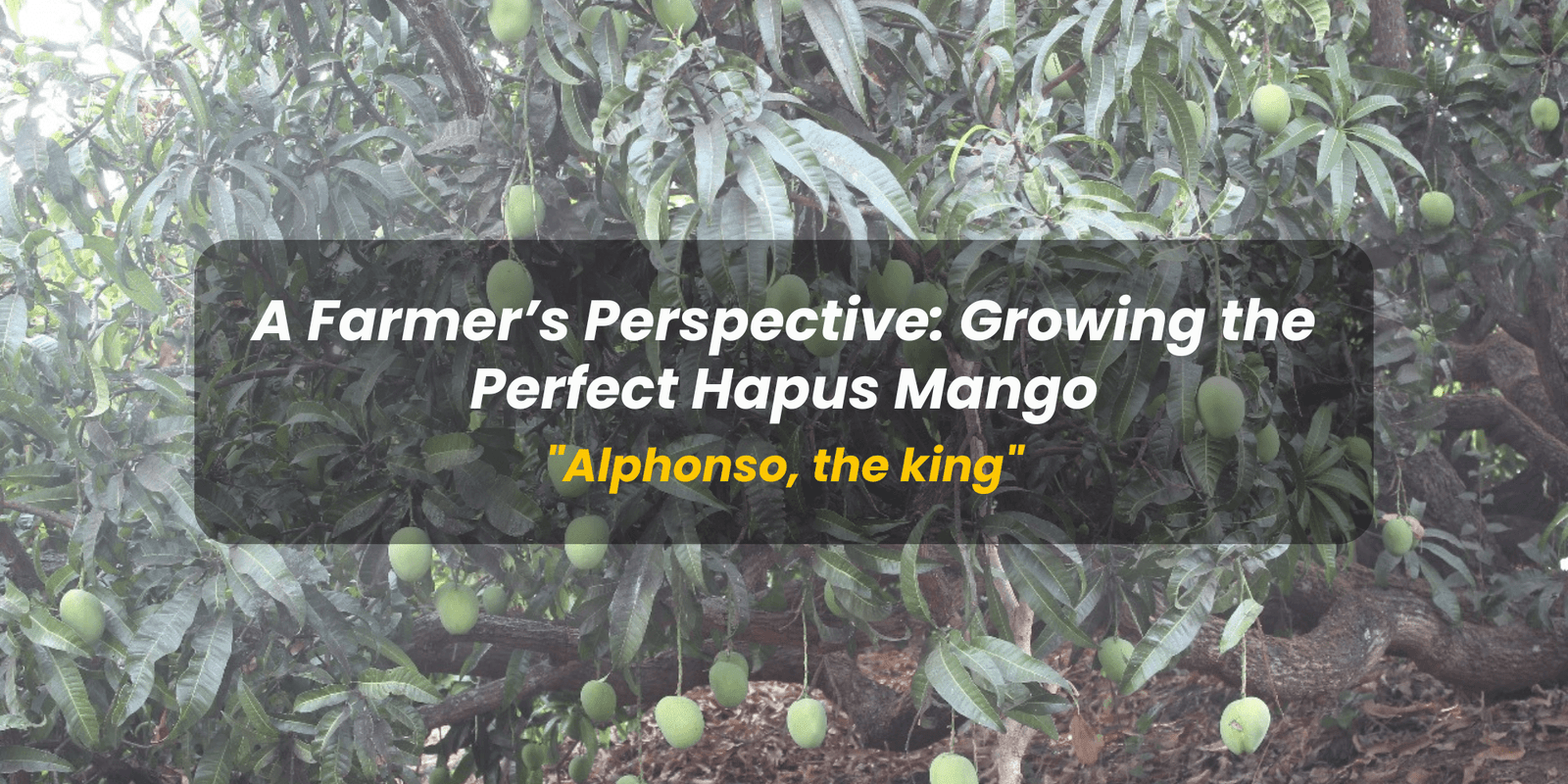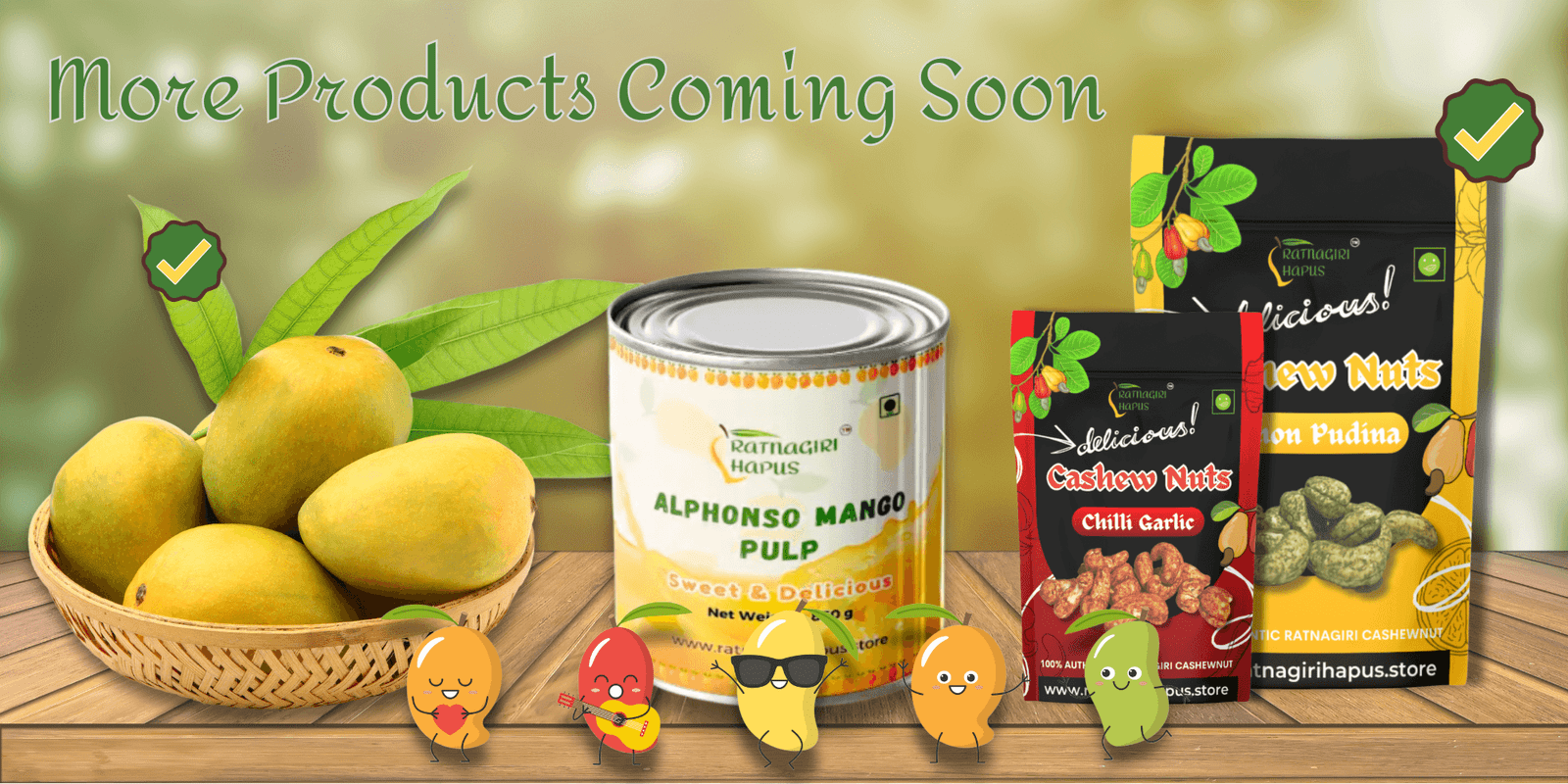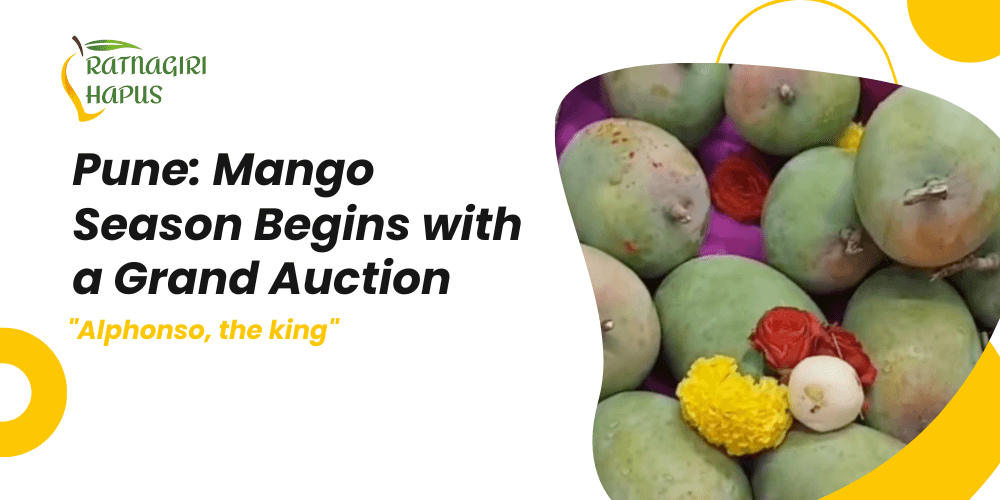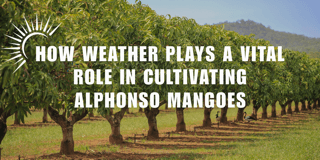
Cultivating the iconic Ratnagiri Alphonso mango, also known as the “King of Fruits,” is a labor of love for farmers in the Konkan region of Maharashtra. Behind every box of this aromatic, golden-hued mango lies months of meticulous care, hard work, and generations of expertise. Farmers across Ratnagiri and Devgad pour their hearts into growing this fruit, making it a true symbol of their perseverance and connection with nature. A Farmer’s Perspective: Growing the Perfect Hapus Mango
In this blog, we take a closer look at the journey of Hapus mangoes through the eyes of farmers, their challenges, and how initiatives like Ratnagiri Hapus Store are empowering them by ensuring fair value for their cultivation efforts.
A Farmer’s Perspective: Growing the Perfect Hapus Mango
The Art of Growing Hapus Mangoes
Cultivating Hapus mangoes begins with selecting the right soil, which is typically lateritic and rich in nutrients. Farmers carefully nurture their trees year-round, ensuring they get adequate sunlight, irrigation, and protection from pests.
The flowering stage, locally called “Mohar,” is a delicate period that requires precision care. Farmers often work tirelessly to protect these flowers from unseasonal rains, pests, and strong winds that can damage their potential yield. This is followed by months of monitoring and nurturing as the fruit develops.
Natural ripening is an essential part of the process, ensuring the mangoes retain their authentic flavor, aroma, and nutritional value. Unlike commercial farming that often relies on artificial ripening, farmers take pride in allowing the fruit to mature naturally on the tree, making it healthier and more delicious.
Challenges in Cultivating Hapus Mangoes
Despite their expertise, farmers face numerous challenges in growing the perfect Hapus mango. Climate change has made weather patterns unpredictable, leading to shifts in flowering and harvesting seasons. Unseasonal rains, droughts, or even pests can have devastating effects on the yield, often resulting in financial losses.
Moreover, the lack of access to a fair marketplace has historically been a significant barrier. Farmers often sell their produce to middlemen at low rates, who then profit by selling it at a premium price in urban markets. This imbalance leaves farmers struggling to make ends meet despite the high demand for their mangoes.
How Ratnagiri Hapus Store Supports Farmers
Ratnagiri Hapus Store has brought about a transformative change in the lives of mango farmers by bridging the gap between them and consumers. By sourcing directly from farmers, the platform eliminates middlemen, ensuring farmers receive fair and transparent pricing for their produce.
The store also empowers farmers by promoting the natural ripening process. This approach not only maintains the authenticity of Hapus mangoes but also helps farmers fetch higher prices for their quality produce.
In the last three years, Ratnagiri Hapus Store has served over 20,000 customers and delivered mangoes to more than 8,000 pin codes across India. This wide reach has created a sustainable and reliable market for farmers, enabling them to sell their mangoes directly to a nationwide audience.
Bringing the Right Price to Farmers
One of the most significant impacts of Ratnagiri Hapus Store is its ability to ensure farmers are fairly compensated for their hard work. By partnering directly with mango growers, the platform eliminates the exploitation that often occurs in traditional supply chains. Farmers are now able to earn what their produce truly deserves, improving their financial stability and encouraging them to continue growing high-quality Hapus mangoes.
For farmers, fair pricing is not just about earnings—it’s about recognition of their effort, tradition, and dedication to cultivating the best mangoes in the world. This has boosted their morale and motivated them to maintain and even improve the quality of their produce.
Empowering Farmers to Overcome Seasonal Challenges
The Hapus mango season is short and heavily dependent on climatic conditions. Unseasonal rains or temperature fluctuations can affect both yield and quality. Ratnagiri Hapus Store works closely with farmers to address these challenges by sharing knowledge, ensuring proper procurement, and providing logistical support.
Additionally, by diversifying its product offerings to include mango pulp and flavored cashews, the platform ensures that farmers have year-round income opportunities. This diversification helps offset the financial risks associated with seasonal farming.
A Sustainable Future for Hapus Farming
With the right practices and market access provided by initiatives like Ratnagiri Hapus Store, farmers can focus on what they do best—growing the perfect Hapus mango. The support they receive ensures not only financial stability but also the preservation of this cherished legacy of mango farming in Ratnagiri and Devgad.
When you buy Hapus mangoes from Ratnagiri Hapus Store, you’re not just indulging in the finest fruit; you’re contributing to the well-being of the farmers who grow them. You’re supporting a system that values fair trade, sustainability, and authenticity.
So the next time you bite into a luscious Hapus mango, remember the farmer whose dedication and hard work made that experience possible. And if you’re looking for authentic Hapus mangoes delivered right to your doorstep, you can place your order on www.ratnagirihapus.store.
Conclusion
Growing the perfect Hapus mango is no easy feat, but it’s a tradition worth preserving. By ensuring fair prices and sustainable market opportunities, Ratnagiri Hapus Store is making a lasting impact on the lives of farmers and securing the future of this beloved fruit.
With every purchase, you’re not only savoring the sweetness of Hapus mangoes but also helping farmers grow their dreams. That’s a story worth sharing—and a fruit worth celebrating.
A Farmer’s Perspective: Growing the Perfect Hapus Mango
